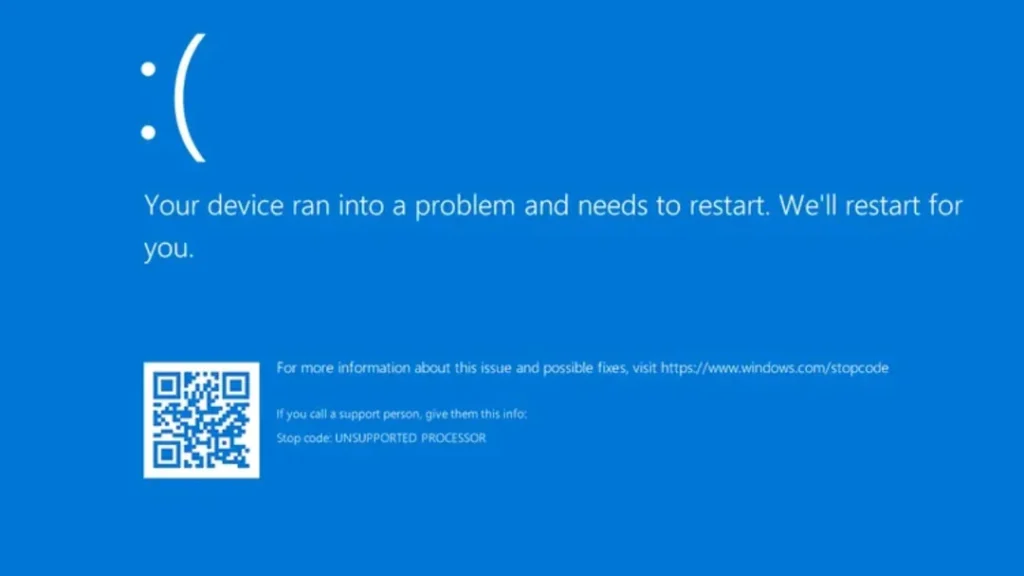In a surprising move, Microsoft has officially retired the infamous Blue Screen of Death (BSOD) in favor of a sleek black screen error message. This decision has sparked discussions among users and tech enthusiasts alike, raising questions about the motivations behind the change and its implications for the user experience.
The Iconic Blue Screen of Death
The Blue Screen of Death has been a longstanding symbol of Windows operating system errors, known for its blue background and white text detailing the failure. For many users, encountering the BSOD has been a rite of passage—a frustrating moment where they are forced to confront system crashes or hardware failures.
Historically, the BSOD served a dual purpose: it provided a clear indication of a critical error while also allowing technical users to glean information about the underlying issues. Despite its utility, the BSOD has often been associated with a sense of dread among casual users, prompting a wave of memes and jokes about the unexpected crashes.
Why the Change to Black?
Microsoft’s decision to switch to a black screen is not merely cosmetic; it reflects a broader strategy to enhance user experience and reduce anxiety associated with system failures. The company aims to modernize how error messages are presented, making them less intimidating and more user-friendly.
According to Microsoft, the new black error screen is designed to convey information more effectively. “We want to provide users with a clearer understanding of what went wrong without the shock factor that the blue screen often induced,” said a Microsoft spokesperson in a recent press briefing.
Impact of Viral Images
Some analysts suggest that the decision to replace the BSOD may have been influenced by the viral images of Times Square overwhelmed by the BSOD display, which sparked a wave of negative publicity. These images served as a stark reminder of how the BSOD has become ingrained in the public’s consciousness as a representation of Windows’ failures.
“The backlash from that event may have pushed Microsoft to rethink their approach to system errors. The black screen is a move towards a more streamlined and less alarming presentation of error messages,” said tech analyst Jane Doe.
The User Experience Factor
By adopting a black screen, Microsoft aims to minimize user anxiety and create a more cohesive aesthetic in line with modern operating systems. The new design incorporates simplified language and graphics, making it easier for users to understand the nature of the error and the steps required for resolution.
Furthermore, the black screen maintains important diagnostic information, including error codes and suggestions for troubleshooting, while presenting them in a less daunting format. This is part of a larger trend in technology to prioritize user experience and accessibility.
What Users Are Saying
Initial reactions from users have been mixed. Some appreciate the new design for its simplicity and clarity, while others mourn the loss of the iconic blue screen that has been a part of their computing experience for decades.
“I always thought the blue screen was a badge of honor—like, I’ve been through the wars of computing! Now it just feels like a plain error,” commented long-time Windows user John Smith.
Future Implications
This change may signal a broader evolution in how Microsoft approaches system failures. The company is likely to continue refining its error reporting mechanisms to align with user expectations and technological advancements.
As users adapt to the new black screen, it will be interesting to see how Microsoft continues to innovate in the realm of user experience and error management. The black screen may be just the first step in a series of improvements aimed at making Windows a more resilient and user-friendly operating system.
Conclusion
In conclusion, Microsoft’s transition from the Blue Screen of Death to a black error screen marks a significant shift in user experience strategy. By prioritizing clarity and reducing anxiety associated with system errors, Microsoft is paving the way for a more modern approach to error management. As users navigate this change, it remains to be seen how this will impact perceptions of Windows and its reliability moving forward.
As we reflect on the legacy of the BSOD, it becomes clear that while it may have been a symbol of frustration, it was also a part of the journey for countless users in the digital age. The black screen may not carry the same weight of history, but it represents a new chapter in the evolution of Windows.


